Tuesday, April 27, 2010
Food Storage Tuesday
This week for your car kits, add some hand sanitizer. Last time we gathered this, a lot of people mentioned that they had tried to do this in the past, but it tends to "explode" or leak if it's stored in the car. Thankfully, some people suggested dumping a little bit out first, so that it's not so full when you store it. Hopefully that will work for you!
How is your three-month supply coming along? It's not as hard as you think: just make a menu plan for 3 months of food (7, 14 or 21 different food storage recipes, for example), then make a master shopping list. It's your food storage plan! Don't have time to plan your food storage? Check out our food storage e-book - we've done it all for you.
April's almost over, but we're still gathering wheat for our longer-term storage. I like keeping my longer-term storage in #10 cans. Abbie has a lot of 5 gallon buckets and gamma lids for hers. Decide what's best for you and start stocking up!
Monday, April 26, 2010
Inspirational Thought
 The true nature of people becomes obvious in times of real need. Good people become better; they get close to one another; they learn to share and become united. The strength that develops out of unity of the many good people becomes a real survival factor. On the other hand, people who lack emotional stability become cruel and ruthless under trying circumstances; however, they do not seem to become an overbearing threat because of the closeness and unity of the majority of the people. Therefore, strangely enough, those who have survived hardships look back with fond memories to the awful period of pain and destruction because they recall the closeness that developed as they united themselves to survive by sharing whatever they had.
The true nature of people becomes obvious in times of real need. Good people become better; they get close to one another; they learn to share and become united. The strength that develops out of unity of the many good people becomes a real survival factor. On the other hand, people who lack emotional stability become cruel and ruthless under trying circumstances; however, they do not seem to become an overbearing threat because of the closeness and unity of the majority of the people. Therefore, strangely enough, those who have survived hardships look back with fond memories to the awful period of pain and destruction because they recall the closeness that developed as they united themselves to survive by sharing whatever they had.How blessed we are to be taught in these times of plenty that we might prepare for times of need without undue haste. Even more wonderful is the realization that we can prepare ourselves without fear because we know that God lives, that He knows and loves each one of us, and that He is giving us direction in these latter days through a living prophet.
God loves us so much that He allows us to come to Him at any time with our personal requests for help and direction—that our eyes will be opened and we will learn to live with wisdom and patience in times of austerity, that we might learn by the Lord’s influence to identify our real needs.
What a comfort it is to read His revelation to the Prophet Joseph Smith, “If ye are prepared, ye shall not fear.” (D&C 38:30.)
The Lord wants us to be prepared.
Ensign 1982 June
How Beautiful to Live in These Times and Be Prepared!
By Elder F. Enzio Busche
Of the First Quorum of the Seventy
Friday, April 23, 2010
Food Storage Friday: Black Bean and Corn Salad
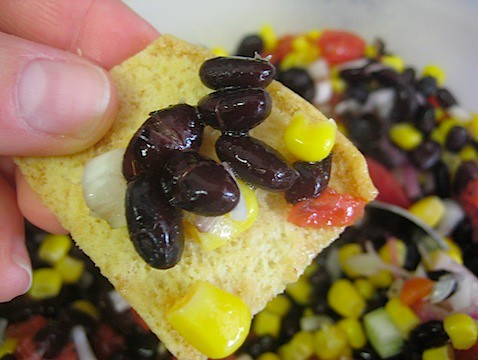
I'm so excited about this recipe. Not just because it's delicious, but because I'm using my first garden produce of the year!
Last fall we planted cabbage, broccoli and red onions. It's just been the last couple of weeks that we've picked the produce and eaten it. This recipe features my homegrown red onions. Food grown in your garden is totally food storage because you aren't depending on anyone else to get it.

Ingredients: red onions, olive oil, corn, diced tomatoes, lemon juice, red wine vinegar and black beans.
I cooked these beans from dry and then just measured out two cans (1 2/3 cups each can) worth. You can use canned beans just fine.
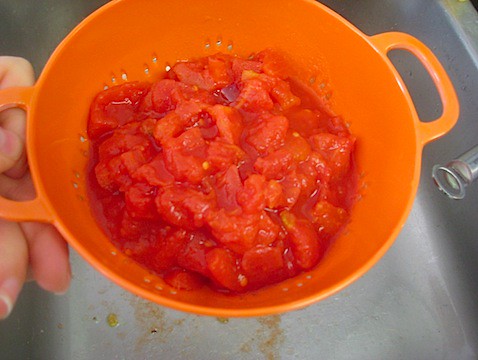
If you have tomatoes from your garden, you can use those, but since my tomatoes aren't nearly ready yet, I just used diced. I drained them so they wouldn't be too wet.
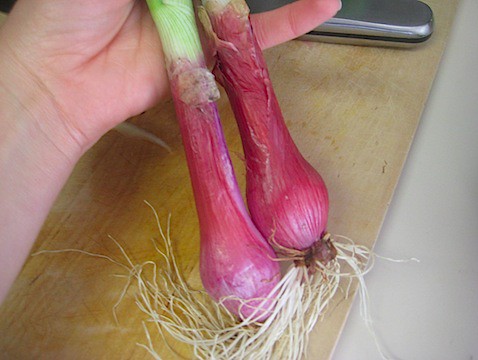
Homegrown red onions!
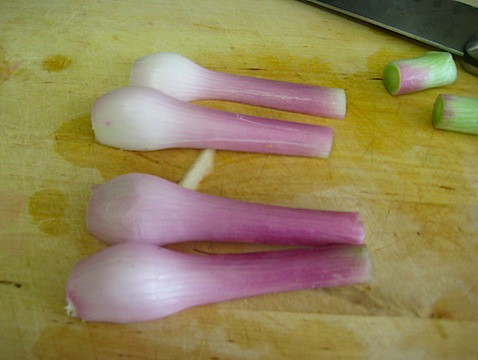
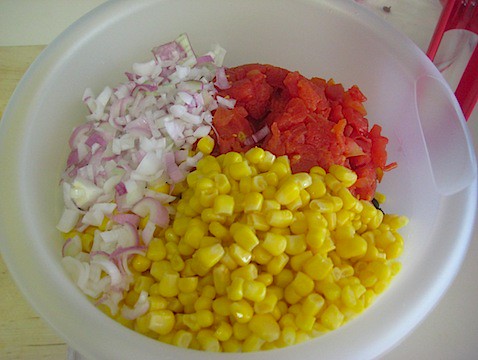
Chop up the onion and combine the onion, corn, tomatoes and black beans in a bowl.

Add the lemon juice
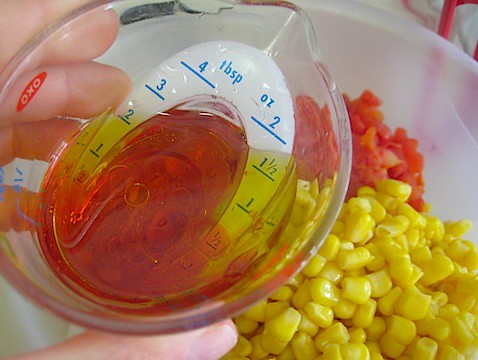
oil and red wine vinegar
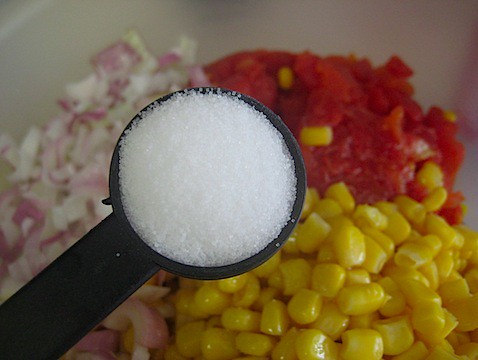
salt
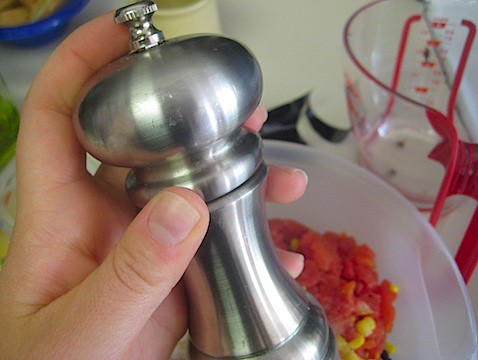
pepper
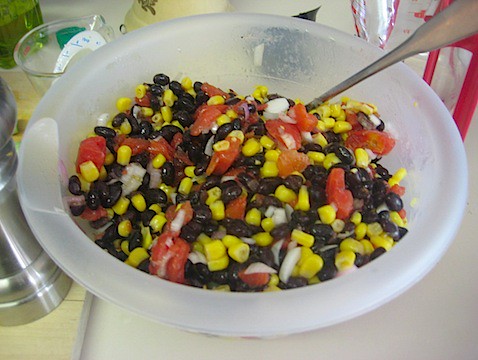
Mix it all together. If you have cilantro growing in your garden, chop some up and mix it in. I'm not a big fan of cilantro--so I left it out. If you don't like cilantro either, check out this article: Cilantro Haters It's Not Your Fault.
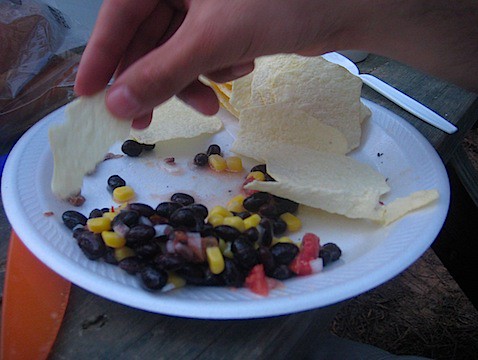
Pack it up and take it camping, or to a BBQ--it's a delicious summer salad.
Black Bean and Corn Salad
What We Eat
1 15oz cans black beans, rinsed and drained
1 17oz can whole kernal corn, drained
1 15oz can diced tomatoes, drained
1 purple onion, chopped
1/4 cup chopped cilantro (optional)
3-4 Tbsp lime or lemon juice
2 Tbsp olive oil
1 Tbsp red wine vinegar
1 tsp salt
1 tsp pepper
Combine ingredients in a large bowl, cover and chill. Garnish with fresh cilantro.
Thursday, April 22, 2010
Goal Check Up
Wednesday, April 21, 2010
How To: Grow Starts from Seeds
 This was our seed set up last year.
This was our seed set up last year. This year we upgraded a bit. We found these trays at Walmart for $5 dollars each, the dirt for all of them (plus some extra) totalled about $10 and the seeds were another $10.
This year we upgraded a bit. We found these trays at Walmart for $5 dollars each, the dirt for all of them (plus some extra) totalled about $10 and the seeds were another $10. If you have a neighbor or friend whose interested in gardening, ask them if they want to grow onion starts and you will furnish the tomatoes. My mom's working on a white tomato for me which I am very curious about.
If you have a neighbor or friend whose interested in gardening, ask them if they want to grow onion starts and you will furnish the tomatoes. My mom's working on a white tomato for me which I am very curious about. If you get more than one sprout in one square, gently pull it out and transplant it to an empty area.
If you get more than one sprout in one square, gently pull it out and transplant it to an empty area. Try some flower starts.
Try some flower starts. Or maybe some herbs.
Or maybe some herbs.Tuesday, April 20, 2010
Food Storage Tuesday
This week for your car kits, add jumper cables. You can find them in many stores: WalMart, Target, etc., or in any auto shops. You can also find them online
How is your three-month supply coming along? I told you a few weeks ago that I'm actually eating through my food storage right now, and setting aside the saved grocery money so that I can stock back up after we move. Want to know what I'm eating? Check out our food storage recipes page and you'll get a good idea. I'm also using a lot of the canned items to supplement other meals with fresh fruits and veggies. (I love spring/summer for all the wonderful food it brings!).
Also, FYI for all you Utahns, many grocery stores are having case lot sales right now (Macey's in Provo, for one). I am in Utah right now visiting my sister, and I am SO jealous of all the great opportunities she has to buy cases for food for a great deal! Be sure to check those out if you live in Utah valley! (Even if you don't, it may be worth the drive if you live relatively close!). Too bad there's a fifty pound limit on my baggage going home, or else I'd stock up too.
This month for our longer-term storage we are gathering wheat. You can buy wheat that's already canned up in #10 cans on several websites: LDS Catalog and Emergency Essentials are just a few. EE also has wheat in 5 gallon buckets, which is great. And don't forget to check out Our Happy Homestead for wheat grinders and other great tools.
Not sure what to do with wheat? Check out our articles all about wheat, how to store wheat and food storage recipes using wheat.
Monday, April 19, 2010
Inspirational Thought

"In the Arms of His Love," Liahona, November 2006
Thursday, April 15, 2010
How to: Find Food Storage Recipes
That's why Abbie and I make sure that all the recipes we share on our food storage recipes page use only non-perishable food storage ingredients.
So, how do we come up with all our recipes? One of my favorite go-to methods is to visit AllRecipes.com.
Wednesday, April 14, 2010
Gardening: Preparing your plot
 First thing is to clear away all the leftover debris from the year before. Pull the dead plants and the weeds as much as you can.
First thing is to clear away all the leftover debris from the year before. Pull the dead plants and the weeds as much as you can. Then till up the dirt. You can do this with a shovel, but it's so much easier and faster to do it with a tiller. You can rent one from a local hardware store, or borrow from a friend that has one. Every year. Thanks guys.
Then till up the dirt. You can do this with a shovel, but it's so much easier and faster to do it with a tiller. You can rent one from a local hardware store, or borrow from a friend that has one. Every year. Thanks guys. Work your tiller all through the garden to mix up all the soil. This brings the soil from the bottom to the top, and breaks up leftover roots. All in all, making for a better planting ground.
Work your tiller all through the garden to mix up all the soil. This brings the soil from the bottom to the top, and breaks up leftover roots. All in all, making for a better planting ground.
 Next up is to treat your soil. You can send in a sample of your soil, through your local cooperative extension service, to be tested for any deficiencies: lime, and whatever. Yes, that is the extent of my knowledge.
Next up is to treat your soil. You can send in a sample of your soil, through your local cooperative extension service, to be tested for any deficiencies: lime, and whatever. Yes, that is the extent of my knowledge. You can also buy fortified potting soil and mix it in.
You can also buy fortified potting soil and mix it in. Or you can walk over to your compost pile and shovel the compost onto the top of your garden. It's the easiest option.
Or you can walk over to your compost pile and shovel the compost onto the top of your garden. It's the easiest option.The only thing we put in our compost pile is grass clippings. Every year we turn it over and the grass on the bottom has composed or broken down into a fertilizer. This is, thanks in large part, to a very hardworking colony of roaches. We all have to pull our own weight around here.
 Now till through the garden all again to mix in all that good insect poop. 'Cause really, that's all it is.
Now till through the garden all again to mix in all that good insect poop. 'Cause really, that's all it is. Use your shovel to make raised rows. The seeds will go on the top of the raised rows. This way you will know exactly where the seeds are and won't be in danger of stepping on them.
Use your shovel to make raised rows. The seeds will go on the top of the raised rows. This way you will know exactly where the seeds are and won't be in danger of stepping on them.If you get lots of rain in your area, or your garden is quite big, you can pick up some flat stones to use as stepping stones.
You're ready to plant!
Tuesday, April 13, 2010
Food Storage Tuesday
This week for your car kits, add a book or some scriptures. I don't know about you but I love to have some reading material in my car for times that I am sitting in the car waiting around for something!
How is your three-month supply coming along? Don't forget, you should store foods that you normally eat as a family. That way nothing will go to waste since you will be eating (and rotating) it regularly. Make a food storage plan and buy according to that. Don't have time to create a list of food storage meals? Check out our food storage e-book - we've done it all for you. Or, look at our food storage recipes and come up with your own shopping list.
We are gathering wheat this month for our longer-term storage. Don't know what to do with wheat? Check out our food storage recipes.
Monday, April 12, 2010
Motivational Monday

“I should like to address a few remarks to those who ask, ‘Do I share with my neighbors who have not followed the counsel? And what about the nonmembers who do not have a year’s supply? Do we have to share with them?’ No, we don’t have to share—we get to share! Let us not be concerned about silly thoughts of whether we would share or not. Of course we would share! What would Jesus do? I could not possibly eat food and see my neighbors starving. And if you starve after sharing, ‘greater love hath no man than this …’ (John 15:13.)
Saturday, April 10, 2010
Our Sponsors
Our other sponsor currently is Our Happy Homestead. Our Happy Homestead is such a neat website - they focus on helping people get "back to basics" and helping families find their homesteading roots. They offer grain mills, smokers, and some neat water storage options (just to name a few things!). Please be sure to check them out, too!
THANKS to our sponsors!
If you are interested in becoming a sponsor for Safely Gathered In, please contact us!
Friday, April 9, 2010
Food Storage Friday: Four-Grain Batter Bread
Answer: Try out a fast new recipe, of course.
This four-grain batter bread, courtesy of my Betty Crocker cookbook, is a quick and simple answer to a yeast bread when you don't have the time/energy/desire to knead and wait.
 Ingredients: cornmeal, white flour, wheat flour, sugar, salt, baking soda, yeast, milk (reconstituted from powder), water, wheat germ, oats (the recipe called for quick, but I used old-fashioned and didn't have any problem)
Ingredients: cornmeal, white flour, wheat flour, sugar, salt, baking soda, yeast, milk (reconstituted from powder), water, wheat germ, oats (the recipe called for quick, but I used old-fashioned and didn't have any problem) Grease two pans and sprinkle with cornmeal.
Grease two pans and sprinkle with cornmeal.In a large bowl, mix 2 c. white flour, 1 1/2 c. whole wheat flour (I used white wheat), 2 T. sugar, 1 t. salt, 1/4 t. baking soda, and 4 1/2 t. yeast. NOTE: The recipe actually called for this entire amount of flour to be white, but since I wanted to use half wheat, I increased the yeast and baking soda amounts a bit to compensate. I'm not sure if that was a good idea or not.
Heat 2 c. milk and 1/2 c. water in microwave/stove until very warm. Add to dry ingredients.
 Beat on low until incorporated and then on medium speed for about 3 minutes. Then, stir in the other three grains of the "four-grain batter": 1/2 c. whole wheat, 1/2 c. wheat germ, 1/2 c. oats, and enough of the original whole wheat flour (I added another cup or so) to make a stiff batter. I think I added a bit too much flour, but it turned out pretty decently.
Beat on low until incorporated and then on medium speed for about 3 minutes. Then, stir in the other three grains of the "four-grain batter": 1/2 c. whole wheat, 1/2 c. wheat germ, 1/2 c. oats, and enough of the original whole wheat flour (I added another cup or so) to make a stiff batter. I think I added a bit too much flour, but it turned out pretty decently. Divide batter into pans, mold as needed, and sprinkle with cornmeal. Cover and let rise about 30 minutes or until batter is about 1 inch below top of pans.
Divide batter into pans, mold as needed, and sprinkle with cornmeal. Cover and let rise about 30 minutes or until batter is about 1 inch below top of pans..
 These crowned over, but as you can see, they didn't rise much more in the oven, so my personal opinion is that it's okay to let them rise above the top.
These crowned over, but as you can see, they didn't rise much more in the oven, so my personal opinion is that it's okay to let them rise above the top. Bake at 400 for 25 minutes. Remove to rack and cool. Brush with melted butter, if desired. Enjoy!
Bake at 400 for 25 minutes. Remove to rack and cool. Brush with melted butter, if desired. Enjoy!Four-Grain Batter Bread courtesy of Betty Crocker
cornmeal
2 c. all-purpose flour
2 1/2 c. to 2 3/4 c. white wheat flour
2 T. sugar
1 t. salt
1/ 4 t. baking soda
4 1/2 t. yeast
2 c. milk
1/2 c. water
1/2 c. whole wheat flour
1/2 c. oats
1. Grease two 8 1/2x4 1/2 pans and sprinkle with cornmeal.
2. Mix 2 c. all-purpose flour and 1 1/2 c. wheat flour, sugar, salt, baking soda, yeast in large bowl. Heat milk and water until very warm. Add milk mix to dry ingredients. Beat with mixer on low until incorporated, then beat on medium for about 3 minutes.
3. Stir in remaining 1/2 c. wheat flour, wheat germ, oats, and enough of original whole wheat amount to make a stiff batter. Divide batter between pans and round tops as needed. Sprinkle with cornmeal and cover to rise for about 30 minutes or until batter is about 1 inch below top of pans.
4. Bake at 400 for 25 minutes until light brown in color. Remove to wire rack and let cool.
Thursday, April 8, 2010
How to: Can (bottle) chicken
This is the chicken we used, thawed.
Clean your jar rings by boiling them in water for a few minutes.
Make sure your jars are clean, too.
Place the raw chicken in the jars, pretty much filling them up.
Then add a teaspoon of salt to each jar.
No need to add water; just put your lids on and screw them shut.
Place them in your pressure canner.....
....which probably looks something like this.
Next, add water to the pressure canner. Each pressure cooker manual will tell you how much water to add for canning chicken. There are a couple different factors, so refer to that.
Bottles + water
Screw the lid on tightly. Make sure it's evenly tightened along the top (not crooked or loose in some places).

This is the pressure gauge. You start the timer when the pressure reaches a certain point (again, find out in your manual). I think we had to wait 45 minutes or an hour - something like that.
That round metal thing controls the pressure. There are three holes in it, which are the pressure settings. Your manual will tell you which setting to use for chicken. When it gets up to high pressure, this thing rattles and shakes like crazy. It's a bit scary.
When it's done, you'll turn off the heat and wait for the pressure to let up. The gauge will tell you. Then it's safe to open it up and take out the chicken. Be careful - it's hot!
Ta-da! Canned chicken. It's cooked from the pressure canner, and ready for your shelf. And was nothing but raw chicken and salt. There will be a lot of liquid in it now.
This was a lot of fun to do, but I'll admit that it was kind of scary, too! It's kind of unnerving to see something so big and with so much pressure inside sitting on your hot stove. And when that pressure gauge starts shaking, it's scary! I didn't want to stand too close. Thankfully, my mother-in-law knew what she was doing so everything was great.
Probably the biggest piece of advice I have is to read your pressure cooker manual. It answered all our questions, and was very clear about all the directions for how to bottle everything you could possibly want to bottle. It was great.
Does anyone else have any bits of advice for bottling food? Any suggestions?




























